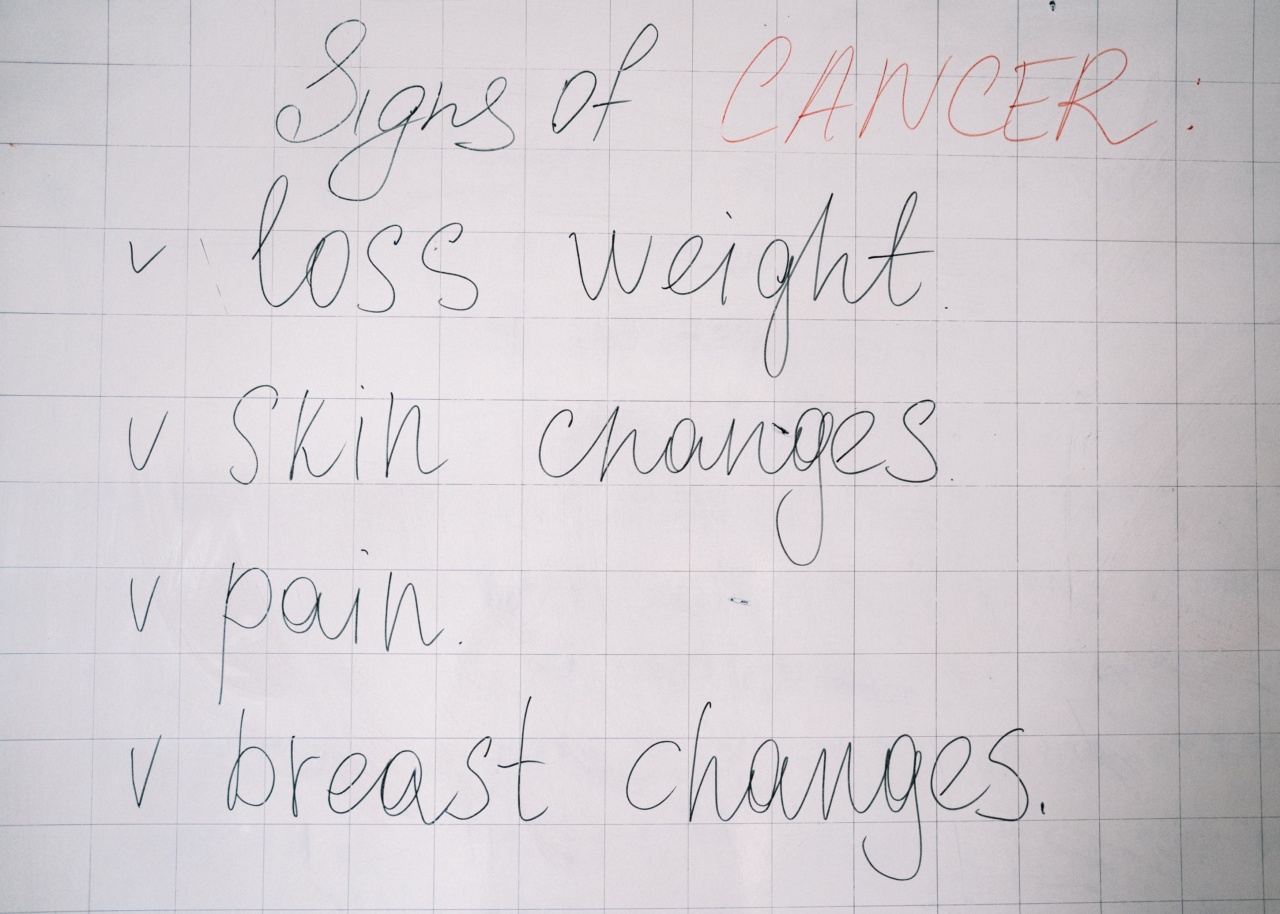Ovarian cancer refers to the abnormal growth of cells in the ovaries, a pair of reproductive glands found in women. It is often called the silent killer as symptoms can be subtle or mistaken for other less serious conditions.
However, being aware of the common signs and symptoms of ovarian cancer is crucial, as early detection greatly improves treatment outcomes. In this article, we will explore the various symptoms that may indicate the presence of ovarian cancer.
1. Abdominal or Pelvic Pain
One of the most common symptoms experienced by women with ovarian cancer is persistent abdominal or pelvic pain. This pain may feel like a dull ache or a more intense cramping sensation.
It can be present throughout the menstrual cycle and may be accompanied by feelings of bloating or fullness.
2. Increased Abdominal Size
Unexplained and persistent bloating or an increase in abdominal size should not be ignored. Women with ovarian cancer may notice a change in their waistline, and their clothes may feel tighter around the abdomen.
This symptom is often overlooked or attributed to weight gain, but it is essential to bring it to the attention of a healthcare professional for evaluation.
3. Difficulty Eating or Feeling Full Quickly
If you find yourself getting full quickly while eating, experiencing early satiety, or having difficulty eating as much as before, it could be a sign of ovarian cancer.
The tumor’s growth and its impact on the digestive system can cause feelings of fullness, resulting in a decreased appetite and weight loss.
4. Changes in Bowel Habits
Ovarian cancer can affect bowel habits, leading to changes in frequency and consistency of stool. Some women may experience constipation, while others may have diarrhea or notice changes in the size or shape of their stools.
These bowel habit changes are typically persistent and occur without any other apparent cause.
5. Urinary Problems
Women with ovarian cancer may experience urinary symptoms such as frequent urination, urgency, or a constant feeling of needing to urinate. These symptoms can easily be confused with urinary tract infections or other urological conditions.
If you notice any significant changes in your urinary patterns, it is important to discuss them with your healthcare provider.
6. Fatigue and Low Energy
Becoming excessively fatigued or experiencing a significant decrease in energy levels without a clear explanation should be a cause for concern.
Ovarian cancer can cause unexplained tiredness, as the body’s energy stores are affected by the abnormal growth of cancer cells.
7. Abnormal Menstrual Bleeding
While many women experience irregular periods, any changes in menstrual bleeding patterns should be taken seriously. Ovarian cancer can cause heavy or prolonged periods, as well as spotting or bleeding between cycles.
It is important to consult with your healthcare provider if you notice any abnormal bleeding patterns.
8. Back Pain
Ovarian cancer can sometimes cause persistent lower back pain. This pain may be dull or sharp and can be focused on one side of the back or pelvis.
If back pain is combined with other symptoms listed here, it is essential to seek medical advice for further evaluation.
9. Unexplained Weight Loss
Unintentional weight loss can occur as a result of various underlying conditions, including ovarian cancer.
If you experience significant weight loss without dieting or any lifestyle changes, it is important to consult with a healthcare professional to determine the cause.
10. Changes in the Appearance of the Abdomen
Some women with ovarian cancer may notice changes in the appearance of their abdomen. This can include swelling, lumps, or a feeling of heaviness in the lower abdomen.
If you notice any changes in the physical appearance of your abdomen, it is essential to have it evaluated by a medical professional.
It is important to note that these symptoms can be caused by various conditions apart from ovarian cancer.
However, if you experience any of these signs persistently and they are unusual for you, it is crucial to consult with a healthcare professional for further evaluation. Early detection plays a vital role in successful treatment outcomes for ovarian cancer.




























